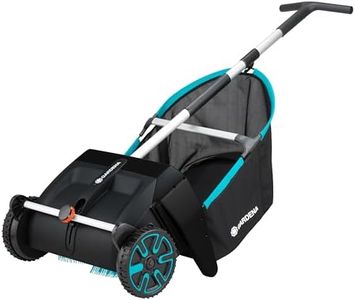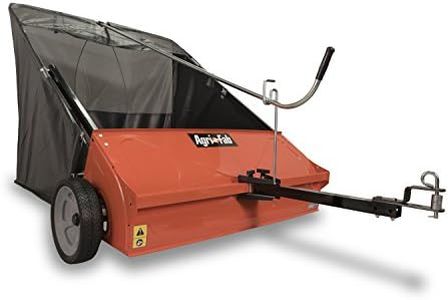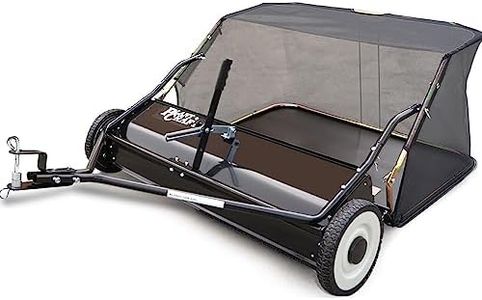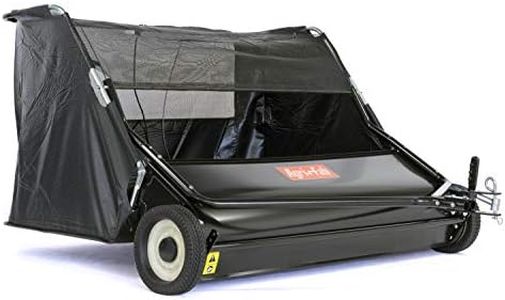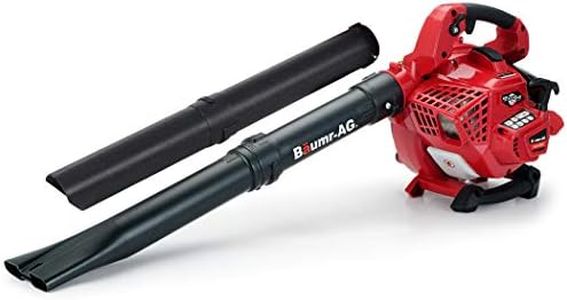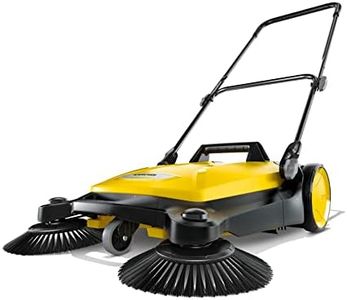We Use CookiesWe use cookies to enhance the security, performance,
functionality and for analytical and promotional activities. By continuing to browse this site you
are agreeing to our privacy policy
9 Best Lawn Leaf Sweepers
From leading brands and best sellers available on the web.Buying Guide for the Best Lawn Leaf Sweepers
Choosing the right lawn leaf sweeper can make yard cleanup much quicker and less physically demanding. These devices help you gather leaves, grass clippings, and other debris from your lawn, leaving it looking tidy with less effort than hand raking. Picking the best fit depends on the size of your yard, the amount and type of debris you deal with, and how much storage space you have.Sweeping WidthSweeping width refers to how broad a path the leaf sweeper covers in one pass. This is important because a wider sweeper can cover more ground quickly, making it a good choice for larger lawns. Sweepers usually range from around 20 inches for smaller yards to over 40 inches for expansive spaces. If you have a compact yard with narrow spaces, a smaller sweeping width increases maneuverability. For open, larger areas, a wider width reduces the number of passes needed, saving you time and effort.
Hopper CapacityHopper capacity means how much debris the sweeper can hold before it needs emptying. This is crucial if you want to minimize interruptions while working. Smaller capacity hoppers are easier to lift and empty but require more frequent dumping, which suits people with less debris or smaller lawns. Larger hoppers let you collect more leaves in one go, which is perfect for bigger yards with lots of trees, but they can get heavy and may be harder to manage if you have limited strength or mobility.
Height AdjustmentHeight adjustment allows you to set how high or low the brushes or sweeping mechanism sit above the ground. This is key to getting the best pick-up for the type of lawn you have. Tall grass, uneven terrain, or different debris types may require different brush heights. Simple, accessible adjustment makes it easier to get optimal performance across seasons and conditions. Consider this feature if your yard has bumpy areas or if you want flexibility for different debris sizes.
Type (Push vs Tow-behind)Lawn sweepers come as push models, which you walk behind and operate manually, and tow-behind models that attach to riding lawn mowers or tractors. Push sweepers are ideal for smaller lawns and for those who prefer a simple, low-maintenance tool. Tow-behind sweepers are better for large yards, as they cover more ground effortlessly when driven behind a vehicle. Think about your yard size and whether you already own a compatible mower or tractor before picking your type.
Storage and Folding DesignSome sweepers offer folding capabilities or detachable parts that make storage more convenient. This matters if you have limited shed or garage space. Compact storage is beneficial if you won’t use the sweeper year-round or have restricted storage areas. If storage is a constraint, look for models known for easy disassembly or a small footprint when folded.
Brush Material and DurabilityThe brushes are what pick up the debris and move it into the hopper. Brush material and durability determine how long the sweeper will last and how well it cleans. Quality brushes made from strong synthetic materials handle repeated use and heavy loads more effectively. If your lawn has lots of sticks or pine cones, or you want a sweeper that lasts for years, emphasize strong, durable brush construction.

